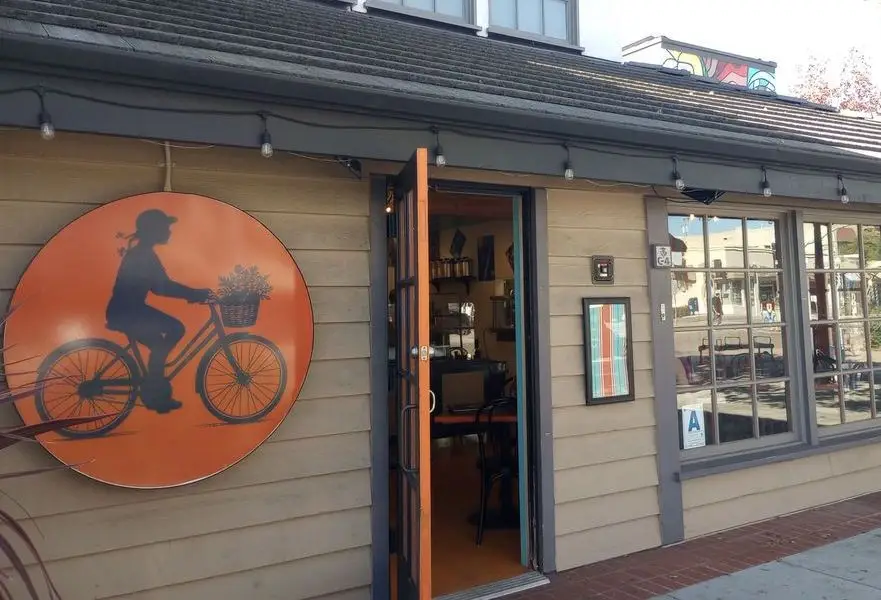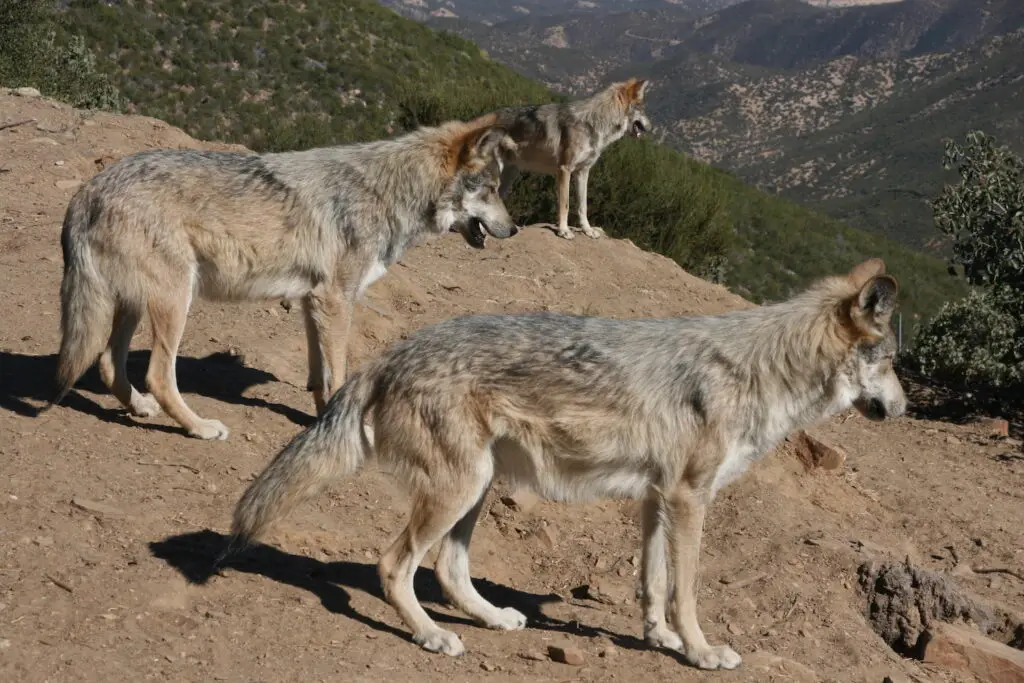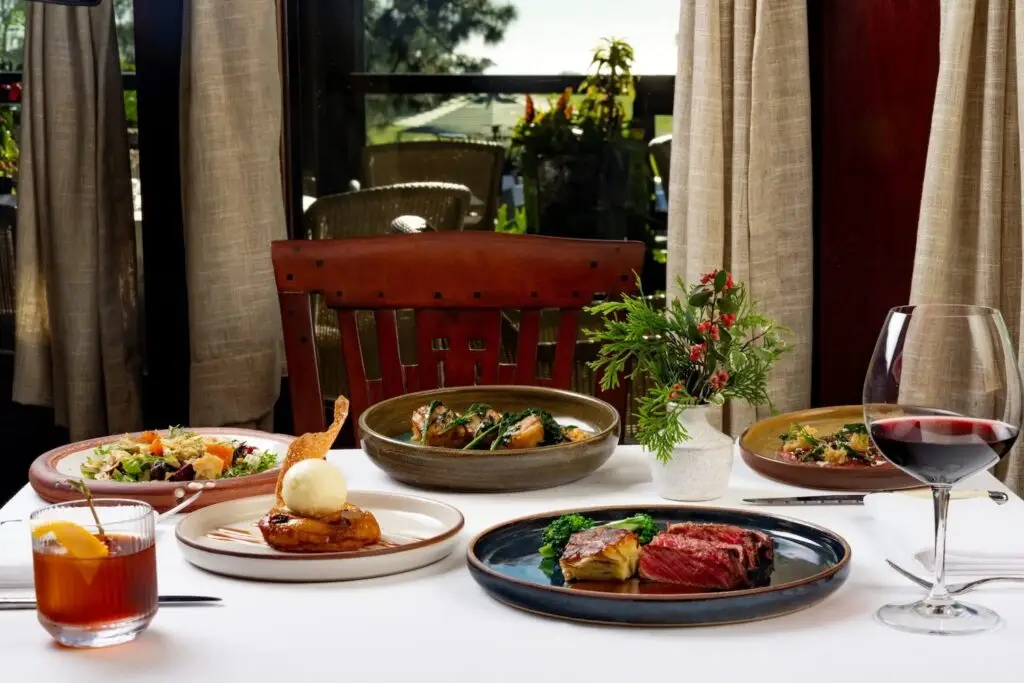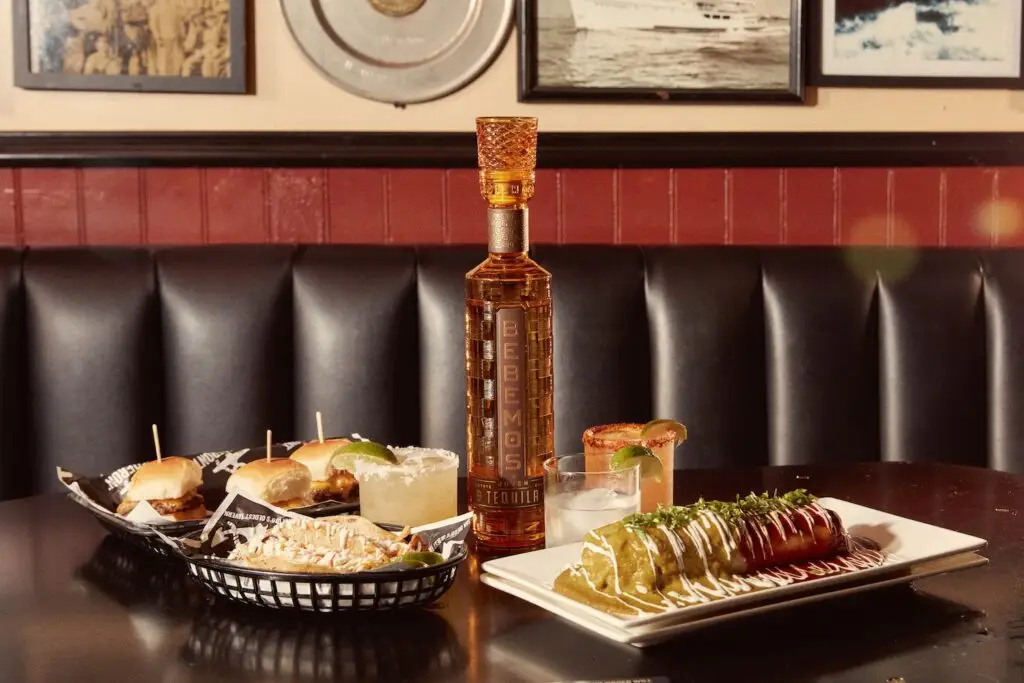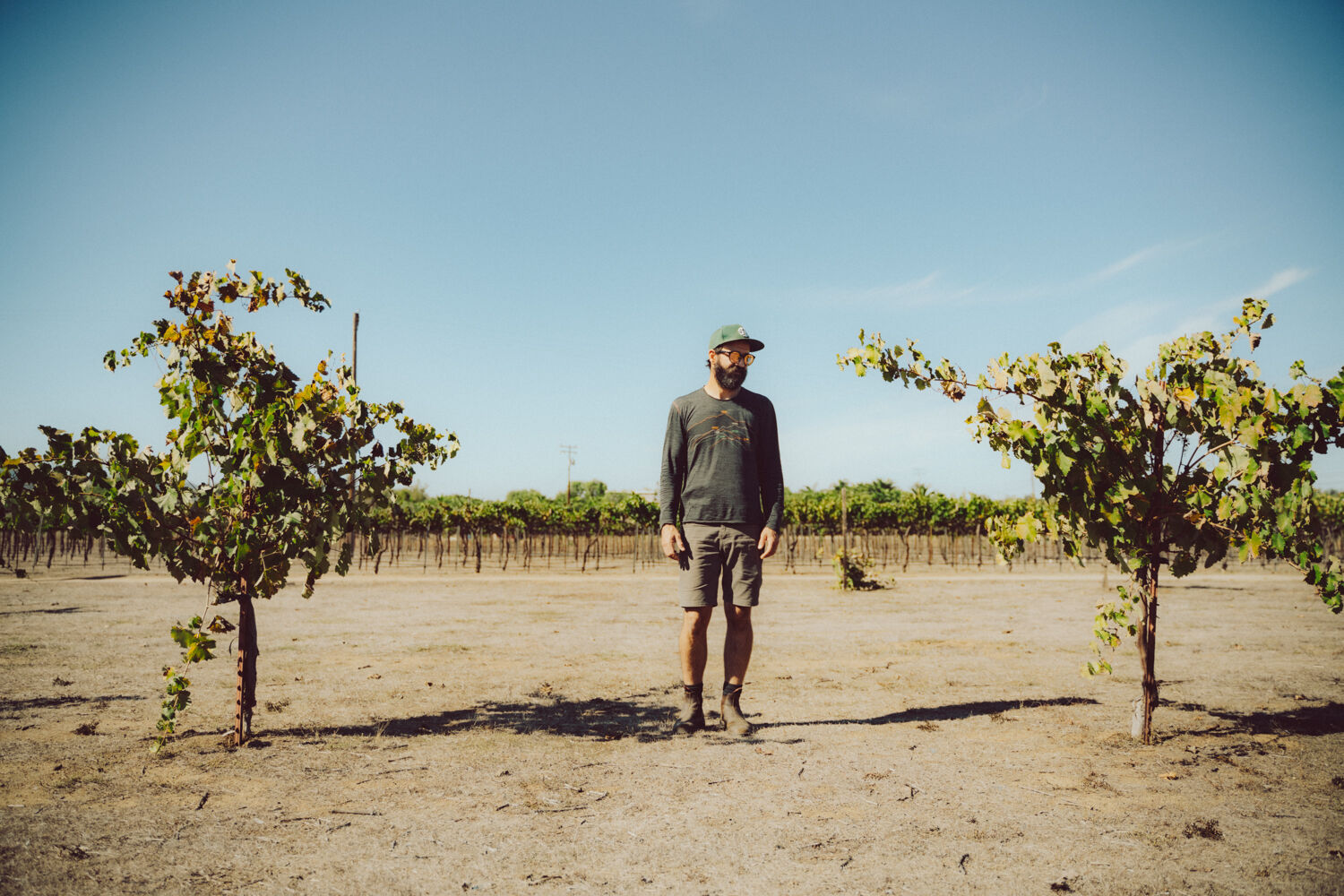
Chris Broomell of Vesper Vineyards is dry-farming vines (relying on rain) to avoid irrigation as drought becomes the norm in SoCal.
Photo Credit: Eric Wolfinger
On the surface, everything in Valle de Guadalupe seemed great. I lounged in a small pool on the deck of a gorgeous villa at Bruma winery, sipping a glass of the winery’s sauvignon blanc in the intense late afternoon sun, gazing past the winery—built sustainably with reclaimed materials—out toward the arid, baked mountains in the distance. I’d spent the day sampling cabernet sauvignon, syrah, and chardonnay in modern design tasting rooms, along with crowds of other day-tripping Americans, before dining al fresco with local, organic ingredients, overlooking a vineyard.
Things are popping in Baja’s emerging wine scene. Earlier this century, there were only a dozen or so wineries. Now, there are almost 200. By all indications, Valle de Guadalupe is ready to take its place among the world-class gastronomic destinations.
But, under the surface, there’s something larger lurking.
“The big problem today is lack of water,” says Camillo Magoni, the 82-year-old winemaker of Casa Magoni, who’s worked 58 harvests in Baja. “We don’t have enough rain, and the water table is going down.” As moisture in Valle de Guadalupe dries up, there’ talk of winegrowers abandoning vineyards. New hotel and winery construction is pitting neighbor against neighbor, as some developers drill deeper wells, forcing others to pay higher prices for water from those who have it.
As more water is extracted from the valley’s ancient ocean-bed soil, the quality of the water that remains becomes saltier and poorer in quality. Often, you can taste an odd saline, briny note in Baja’s wines, particularly curious in the reds. Some say it’s “terroir.” Others blame it on the water.
“We need to solve this problem as soon as possible,” Magoni says, “Or the valley is gone.”
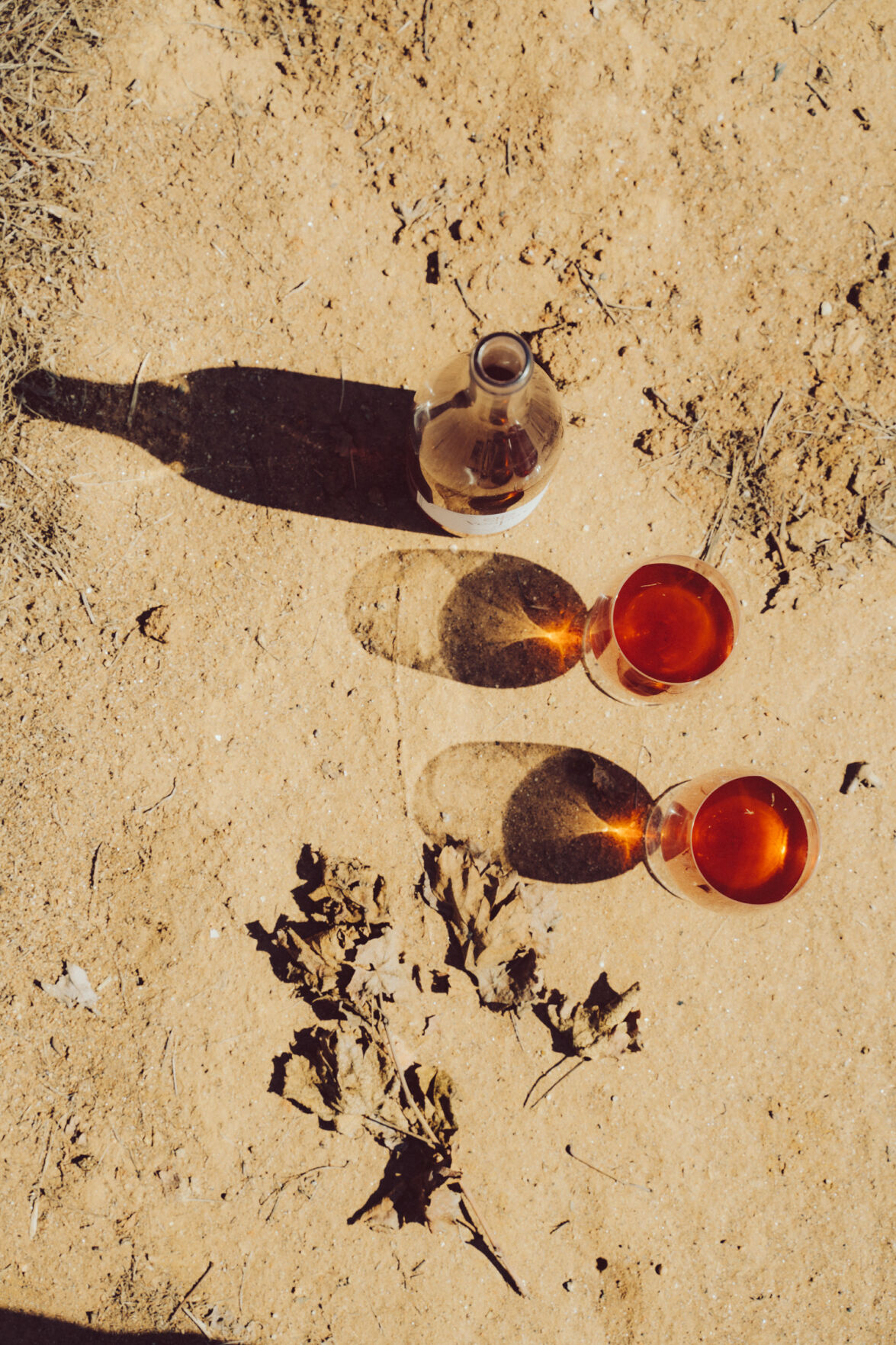
Winemaker Lulu Martinez of Bruma Vinícola worked in Bordeaux before her beginning her current role in Valle de Guadalupe, where she finds herself harvesting grapes earlier and earlier each year.
Photo Credit: Eric Wolfinger
San Diego County’s own winegrowers are also facing a water crisis. “We thought we were irrigating enough, but we’ve never been in this kind of drought,” says Alysha Stehly, enologist and co-owner (with her husband Chris Broomell) at Vesper Vineyards. Stehly says she saw a 25 percent smaller yield in her vineyards during this fall’s harvest. “Everyone needs to start thinking: How do we farm without water?” she asks.
With all the crises facing the world, some might dismiss the issue of growing grapes for premium wine to be a minor, bougie, first-world problem. But wine has always been a window into much larger farming issues.
“In some ways, wine is like the canary in the coal mine for climate change impacts on agriculture because these grapes are so climate-sensitive,” said Benjamin Cook from Columbia University’s Lamont-Doherty Earth Observatory.
Cook is the co-author of a 2020 study that determined the world’s area suitable for growing wine grapes could shrink by more than half over the next several decades if climate change continues its pace. According to the study, some famed wine regions in Spain, Italy, Australia, and elsewhere are already too hot to grow their traditional grapes. Valle de Guadalupe and San Diego County share many characteristics of these regions. So what is a 21st-century winemaker in a hot climate supposed to do?
Lulu Martinez, a winemaker at Bruma, spent half her life working in Bordeaux, returning in 2015 to work with Bodegas Henri Lurton and then moving on to her current position. Baja is a completely different growing situation than a cooler, rainier environment like Bordeaux. “Here, it’s like, ‘Ok, tomorrow it’s going to be hot again,’” she says with a laugh.
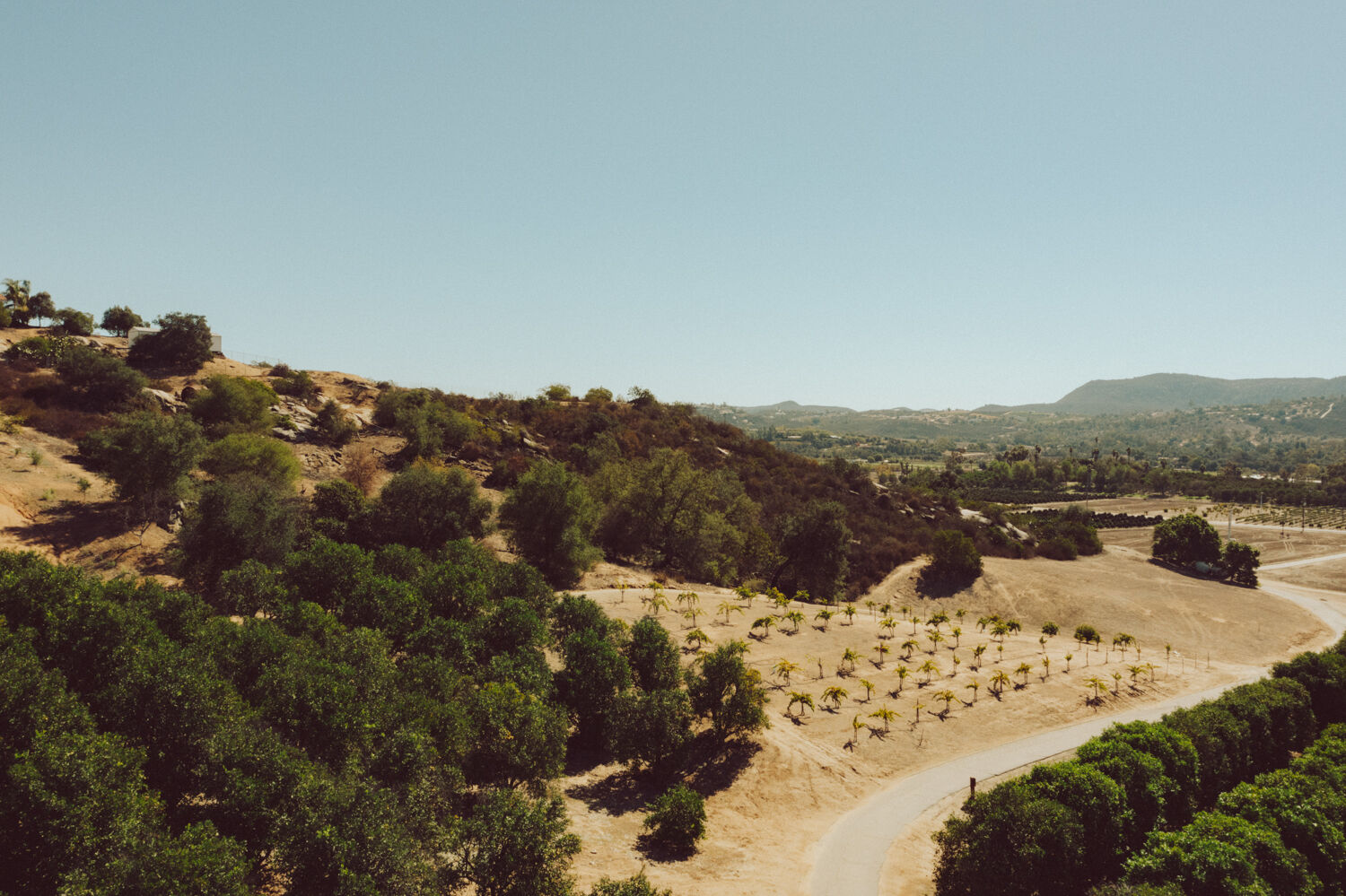
Vines at J. Brix in SD County. “In the next 20 years, there’s going to be a huge change in the varieties planted,” co-winemaker Emily Towe says of area vines.
Photo Credit: Eric Wolfinger
Martinez finds herself harvesting grapes earlier and earlier each year. This year, she harvested her sauvignon blanc in late July, a date nearly unheard of in the world of wine. She is also experimenting with techniques in the vineyard, such as adding algae from the sea to the usual crop cover between rows of vines. The algae helps to maintain humidity in the soil. Martinez insists that organic farming must be part of any solution. Right now, Bruma is organic in practice but still seeks certification. “Being organic?” she says. “Seriously, sincerely, we have to be. Today, making good wine is not enough. What’s your social ethic? What’s your environmental ethic?”
Despite her forward-thinking agricultural efforts, for Martinez, it all comes back to water. “We have to deal with the drought. Everything else is just easy,” says Martinez. “But Mother Nature only gave us so much water.” You’ll find the same conversation with every winemaker in the valley. “We started talking about this in 1986,” Magoni says ruefully. “We specialize in talking.”
Some have suggested desalination as a possible solution to the water problem. Magoni notes that south of Ensenada, there are around 60 private desalination plants used for agriculture. But he believes wineries like his in the valley may be too far from the ocean for that to be feasible. He sees reclaimed, treated water as a more likely solution. One plan that’s been talked about is a pipeline from Tijuana to bring reclaimed water to the valley. But as Martinez notes, “In Mexico, the government isn’t going to give this to us. We have to do it privately.”
Twelve years ago, with the permission of the water commission in Tijuana, Magoni planted an experimental vineyard inside the perimeter of the city’s water treatment plant. “I made water and soil analysis and did microbiology studies of the grapes. No problems at all. The vines are beautiful,” he said. This year, they harvested three tons of cabernet sauvignon from the water treatment plant.
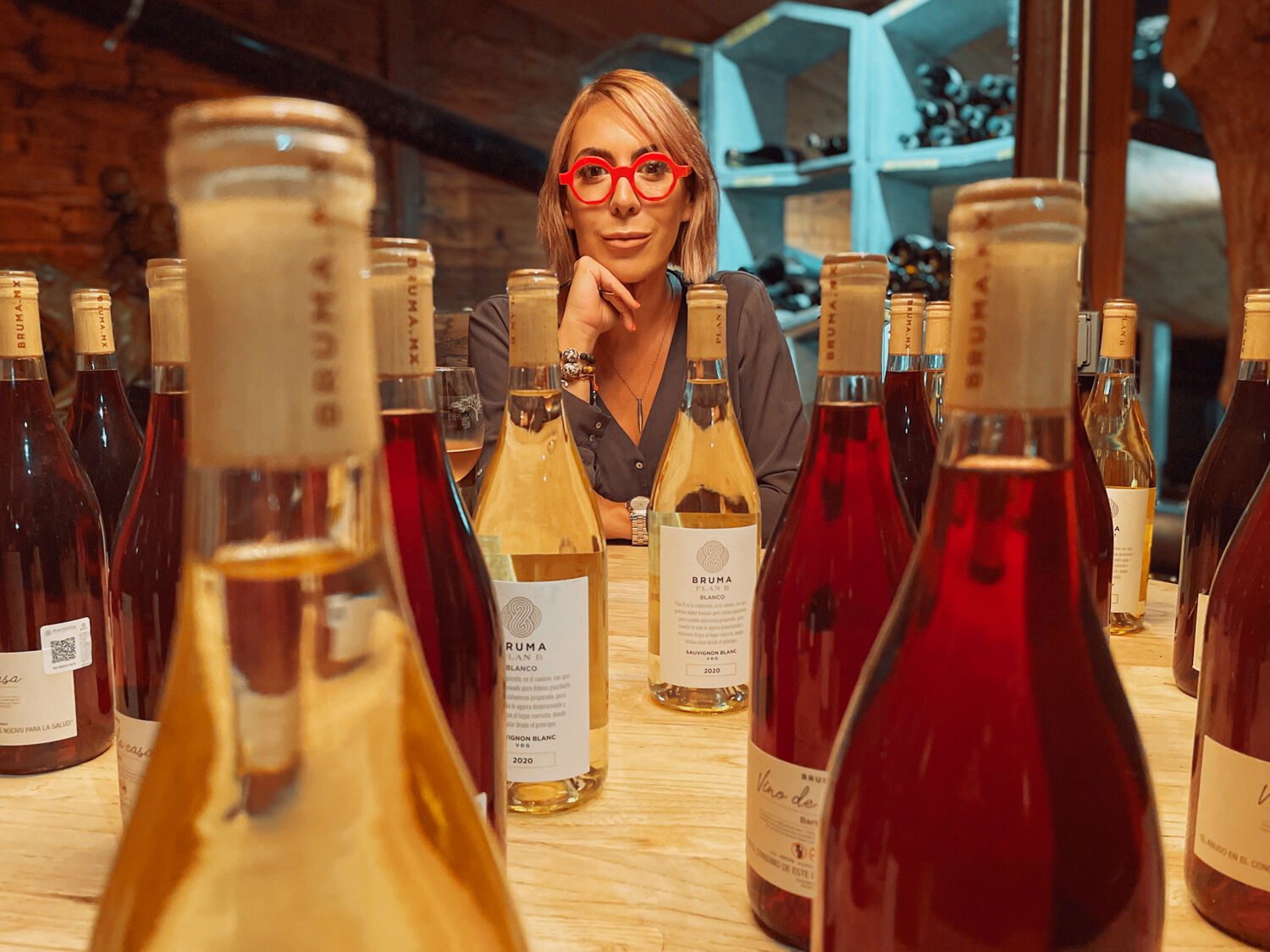
Winemaker Lulu Martinez of Bruma Vinícola worked in Bordeaux before her beginning her current role in Valle de Guadalupe, where she finds herself harvesting grapes earlier and earlier each year.
“We need water, and the only source is treated water. But no one wants to communicate that,” says Victor Segura, winemaker at Madera 5, which is based on the outskirts of Ensenada in an industrial area that has been repurposed and now houses a handful of smaller wineries.
In San Diego County, growers are finding different challenges and solutions. Growers such Chris Broomell at Vesper Vineyards are having to implement dry-farming techniques to avoid irrigation, such as growing bush vines rather than the trellis system you find across most California vineyards. The bush vines need much less water and form a canopy that shields grapes from direct sunlight—something growers do in hot climates like the South of France, Spain, and Australia. “The trellis system is set for cheap economics, not quality,” Broomell says. “But with bush vines you have to farm it, and understand farming. Everything is way more expensive.”
Even that may not be enough. According to Broomell, vines need about 12 inches of rain per year for dry farming, and San Diego only got between 3 and 10 inches last year, depending on factors like elevation, proximity to the ocean, and other environmental factors. Broomell saw his grape yield drop by about a third this year. The drought is also causing another new threat: Coyotes. Broomell says coyotes will eat grapes from certain vineyards, and they also chew through irrigation systems, rendering them inoperable. Broomell estimates he lost about 20 to 50 percent of his grapes in certain vineyards to coyotes.
Beyond dry farming, water treatment plants, and coyote management, there’s also possibly a more straightforward solution: Grow different grapes. Both San Diego County and Valle de Guadalupe are very different than Bordeaux, Burgundy or Napa. Many suggest it’s time to move on from the internationally famous grapes such as cabernet sauvignon, pinot noir, or chardonnay and to focus on new varieties—ones that like heat and don’t require as much water.
“We are working with so many grapes here,” Segura says of Baja. “It’s crazy, but there’s not been much investigation into it. Sooner or later, we need to decide which grapes do better here.”
As he moves Madera 5 more toward hotter-climate Italian varieties like barbera or sangiovese, Segura believes that half of the grape varieties currently grown in Valle de Guadalupe need to be abandoned for the future. But that’s easier said than done. Wine drinkers still love and cling to what they’re familiar with. “People like the words cabernet sauvignon and pinot noir,” he says.
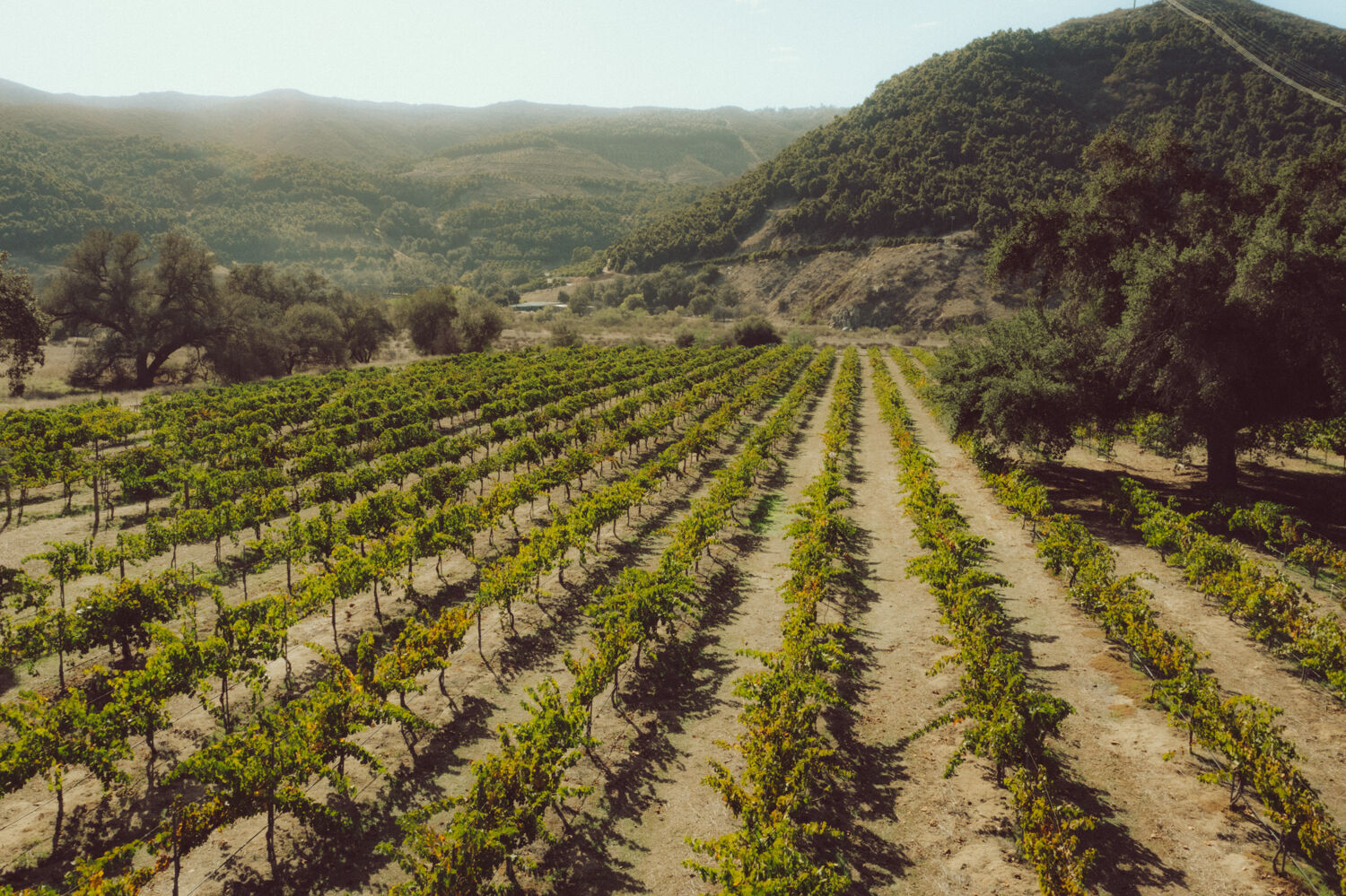
2022-11-28-New-Wines-5.jpg
Photo Credit: Eric Wolfinger
All over the wine world, there is talk about which new varieties need to be planted to deal with climate change. That’s the message of the study by Columbia University’s Lamont-Doherty Earth Observatory, which looked at models for how various grapes would thrive in various climates.
“By switching these varieties around, you can reduce losses by a significant amount,” said Cook. For example, the study’s authors say Burgundy could cut its projected vineyard losses in half if it switched from pinot noir to heat-loving grapes like mourvèdre or grenache. In Europe, where regions have grown the same grapes for hundreds of years, these are not easy conversations, and changes must happen via legislation. Last year, it was huge news that the French government allowed Bordeaux to add six new grape varieties to the five it has grown for centuries.
The wine regions of Baja and San Diego are not bound by tradition. Many have already embraced grapes from France’s southern Rhône Valley, like mourvèdre. “For a long while, this was too weird for a lot of people,” says Broomell. “But mourvèdre is something special that can come out of San Diego.”
“In the next 20 years, there’s going to be a huge change in the varieties planted,” says Emily Towe of J. Brix in Escondido. Towe also sees varieties from the south of France, such as grenache, picpoul, and carignan, as the answer. “Because San Diego is so experimental and they’re planting so much Rhône, they’re ahead of the game,” she says.
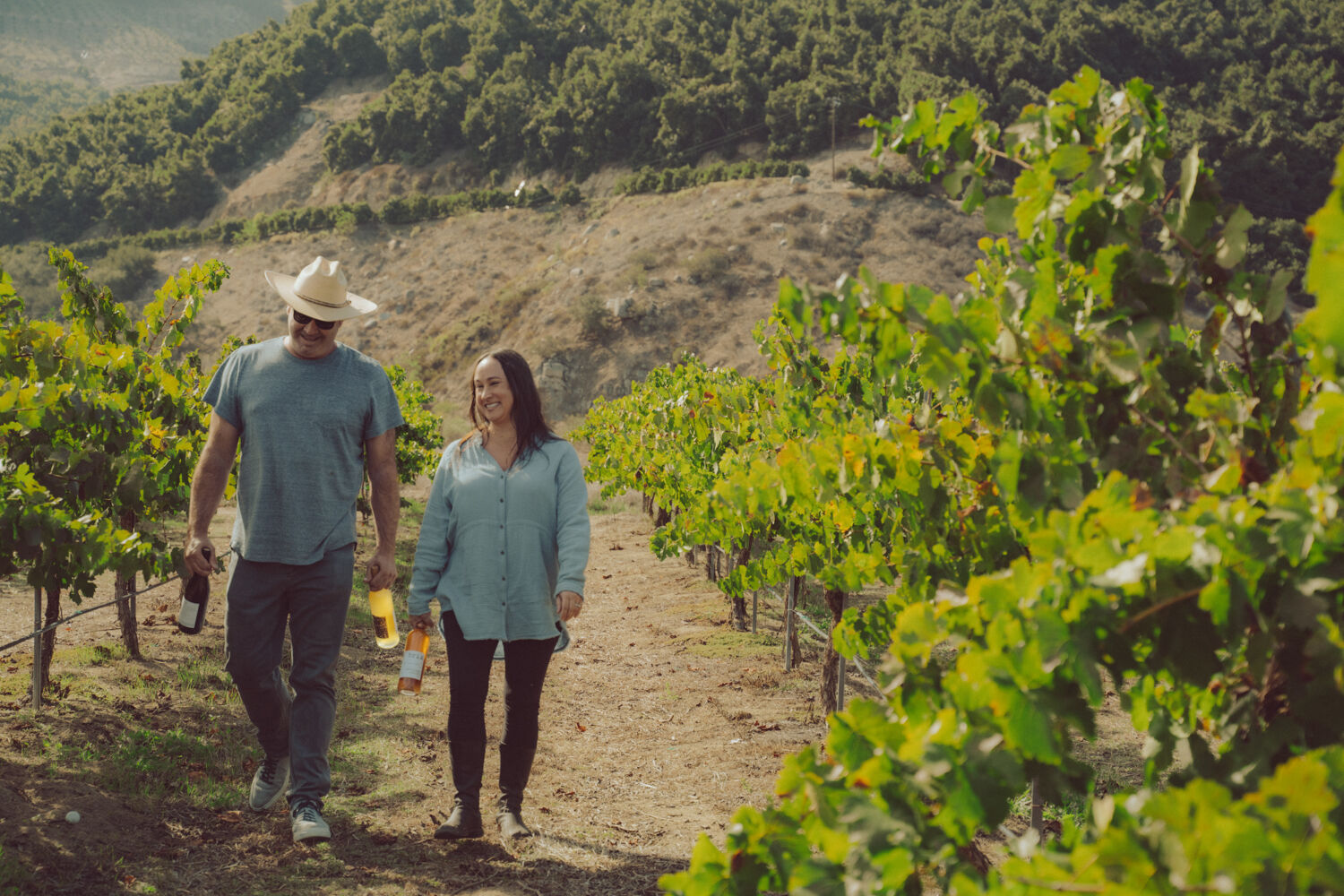
Jody and Emily Towe lug a few bottles through their J. Brix vineyard.
Photo Credit: Eric Wolfinger
In Valle de Guadalupe, which bills itself as the “Napa of Mexico,” changing grape varieties is more challenging. Right now, the signature grape of the region is the Italian grape nebbiolo—though many put “nebbiolo” in quotes since there’s a genetic link to the famous Nebbiolo of Italy’s Piedmont region.
“Climate is forcing us to choose,” says Magoni, who experiments with growing 120 varieties. “If you ask me, ‘Which one is the future?’ I don’t know,” he says with a laugh. “We need to find a grape that’s an icon, like malbec in Argentina.”
But how do you convince wine tourists to switch to unfamiliar grapes like mourvèdre, falanghina, fiano, vermentino, and aglianico? “Maybe we need to start blending to introduce the grapes,” Magoni says. “Some chardonnay with 20 percent vermentino, so people start hearing the name vermentino. It could take another ten years, but we need to start.
PARTNER CONTENT
The top winemakers in the region see these changes as more positive than negative. “I hate what climate change is doing, but I love that it’s pushing the boundaries of what people do,” says Stehly of Vesper Vineyards. “You can’t just grow pinot noir anymore.”
